Butternut squash plants are not only delicious but also highly nutritious. Packed with complex carbohydrates, fiber, potassium, niacin, beta carotene, and iron, they are a great addition to any home garden. These winter squash plants have the potential to produce an impressive harvest if given the proper care and attention. Are you ready to learn how to grow your own butternut squash?
Key Takeaways:
- Butternut squash plants can yield 10 to 20 squash per vine.
- They are a rich source of complex carbohydrates, fiber, and essential nutrients.
- Proper care is crucial for growing healthy butternut squash plants.
- Learn when to plant, how to provide ideal growing conditions, and how to harvest and store butternut squash.
- Discover popular butternut squash varieties and delicious recipes to enjoy your homegrown produce.
What is a Butternut Squash?
Butternut squash is a winter squash variety with a delightful combination of sweet and nutty flavors, making it a popular ingredient in various culinary creations. Unlike its summer squash counterparts, butternut squash is harvested and consumed when it reaches full maturity, characterized by its thick and hardened rind. The beautiful orange flesh of the butternut squash is rich in flavor and nutrients, making it a versatile vegetable for both savory and sweet dishes.
Belonging to the Cucurbita moschata species, butternut squash plants are known for their vigorous growth. These plants can reach a height of up to 18 inches and have sprawling vines that spread between 5 to 15 feet. To support optimal growth and development, butternut squash plants require full sun exposure and well-draining soil.
Key Features of Butternut Squash:
- Sweet and nutty flavor
- Winter squash variety
- Hardened and thick rind
- Cucurbita moschata species
- Tall plants with spreading vines
- Requires full sun and well-draining soil
Butternut squash not only adds a delightful taste to dishes but also provides several health benefits. It is a good source of dietary fiber, potassium, vitamin C, and vitamin A, enhancing the nutritional value of your meals.
If you’re looking for a versatile and flavorful vegetable to incorporate into your kitchen creations, butternut squash is an excellent choice. Its unique taste and vibrant color can elevate a variety of dishes, from creamy soups and comforting stews to flavorful roasted sides and delectable desserts.
Now that we understand what butternut squash is and its remarkable characteristics, let’s explore the optimal timing for planting these delicious winter squashes.
| Feature | Description |
|---|---|
| Taste | Sweet and nutty |
| Variety | Winter squash |
| Rind | Thick and hardened |
| Species | Cucurbita moschata |
| Growth | Tall plants with spreading vines |
| Requirements | Full sun and well-draining soil |
When to Plant Butternut Squash
Butternut squash can be started indoors about six weeks before the last frost or directly sown outside in late May to early June when all danger of frost has passed and the soil has warmed up to about 60 to 65 degrees F. It’s important to time the planting correctly to maximize growth and yield.
Starting butternut squash seeds indoors provides a head start and allows for better control over growing conditions. To begin, fill seed trays or pots with seed starting mix and plant the seeds at a depth of 1 inch. Keep the soil consistently moist, and place the trays in a warm area with plenty of light.
After about two weeks, the seedlings should emerge. They can be transplanted into larger pots or cell packs, maintaining a spacing of about 2 inches between each plant. Continue to provide adequate light, water, and nutrition until the seedlings are ready to be hardened off and planted outside.
If sowing directly outside, wait until the soil has warmed up and all danger of frost has passed. The soil temperature should be around 60 to 65 degrees F for optimal germination and growth. Before planting, prepare the garden bed by removing any weeds, loosening the soil, and adding compost or organic matter to improve fertility and drainage.
When planting butternut squash seeds, make sure to space them 24-36 inches apart to allow for adequate growth and airflow. Dig a hole about 4 inches deep, place one seed in each hole, and cover with soil. Water thoroughly but gently to avoid displacing the seeds.
Butternut squash plants are tender and susceptible to frost, so it’s crucial to wait until all risk of frost has passed before planting them outside. They thrive in warm weather and need consistent temperatures to grow well.
Properly timing the planting of butternut squash ensures optimal growth and a bountiful harvest. Whether starting indoors or directly sowing outside, following the recommended schedule will give the plants the best chance of success.
Growing Conditions for Butternut Squash
To ensure healthy growth and a bountiful harvest of butternut squash, it’s crucial to provide the right growing conditions. Let’s explore the soil requirements and other considerations for cultivating this delicious winter squash.
Soil Requirements
Butternut squash plants thrive in well-draining soil that is rich in compost. The ideal soil type for butternut squash is acidic, sandy loam. This type of soil provides good drainage and allows the roots to access nutrients easily. Before planting, prepare the soil by incorporating organic matter, such as compost or aged manure, to enrich its fertility and structure.
Adequate Sunlight
Butternut squash plants are sun lovers and require full sunlight to thrive. Ensure that your planting location receives at least six to eight hours of direct sunlight daily. This will promote healthy growth, increase fruit production, and enhance the flavor of the squash.
Air Circulation
Providing good air circulation around the butternut squash plants is essential for preventing disease. Proper spacing between the plants and removing any weeds or debris that could impede ventilation will help keep the foliage dry and reduce the risk of fungal infections.
Proper Watering
While butternut squash plants need consistent moisture, they should not be kept in overly wet or soggy conditions. The soil should be deeply soaked during planting to promote root establishment. Throughout the growing season, maintain moist soil by watering regularly, ensuring the water reaches the root zone. Mulching around the plants can help retain moisture and suppress weed growth.
Summary of Growing Conditions for Butternut Squash
| Aspect | Growing Conditions |
|---|---|
| Soil | Well-draining soil rich in compost, acidic, sandy loam |
| Sunlight | Full sun (at least 6-8 hours of direct sunlight) |
| Air Circulation | Ensure good air circulation around the plants |
| Watering | Deeply soaked soil during planting, regular watering to maintain moisture |
By providing the right soil conditions, ample sunlight, good air circulation, and proper watering, you can create optimal growing conditions for your butternut squash plants. These efforts will contribute to a flourishing crop of this delicious and nutritious winter squash.
Watering and Fertilizing Butternut Squash
When it comes to growing healthy butternut squash plants, proper watering and fertilizing are essential. By adequately meeting their moisture and nutrient needs, you can ensure robust growth and maximize your harvest. Let’s explore the best practices for watering and fertilizing butternut squash.
Watering Butternut Squash
Butternut squash plants require regular watering to maintain optimal moisture levels in the soil. Aim to provide about 1 inch of water per week, ensuring that the soil is moistened down to a depth of 8-10 inches. This will encourage healthy root development and help the plants withstand hot and dry periods.
To achieve consistent soil moisture, consider using drip tape irrigation. This method delivers water directly to the plant’s root zone, minimizing evaporation and ensuring that the soil stays moist. Drip tape irrigation is particularly beneficial for butternut squash, as it helps prevent fungus and mildew diseases, which can be problematic in moist conditions.
Fertilizing Butternut Squash
Butternut squash plants are considered heavy feeders, meaning they require a steady supply of nutrients throughout the growing season. To meet their nutritional needs, regular fertilization is essential.
One effective method is applying compost tea or liquid fertilizer every 2-3 weeks. This provides a balanced blend of nutrients that can fuel plant growth and development. Additionally, midway through the growing season, consider side-dressing the plants with compost or aged manure. This enriches the soil, supplying a slow-release source of nutrients as the organic matter breaks down.
Remember to follow the recommended application rates according to the specific fertilizer or compost product you are using. Over-fertilizing can lead to excessive vegetative growth with fewer fruit or can even damage the plants.
By implementing proper watering and fertilization practices, you can ensure that your butternut squash plants thrive and produce a bountiful harvest. Next, we will delve into the various pest and disease management strategies to protect your plants and optimize their growth.
Pest and Disease Management for Butternut Squash
When growing butternut squash, it’s important to be aware of potential pests and diseases that can affect the plants. By implementing proper management techniques, gardeners can protect their crops and ensure a successful harvest.
Pest Control
Butternut squash plants can fall victim to various pests including aphids, beetles, slugs, spider mites, squash bugs, and stem borers. To combat these pests, I recommend using insecticidal soap, which is an effective and organic solution. Apply the soap in the evening when bees have returned to their hives to avoid harming beneficial pollinators.
“I’ve found insecticidal soap to be highly effective in controlling pests on my butternut squash plants. It’s gentle on the plants and environment, while still providing excellent results.” – Experienced gardener
Additionally, promoting biodiversity in your garden can help naturally control pests. Planting companion plants like marigold, catnip, oregano, or mint can deter pests. Nasturtiums can serve as trap crops, attracting pests away from the butternut squash plants.
Disease Prevention
Common diseases that affect butternut squash include powdery mildew, downy mildew, and various viral infections. To prevent these diseases, it’s crucial to prioritize sanitation and maintain good air circulation within the growing area.
Regularly remove any infected leaves or plants to prevent the spread of disease. Proper spacing between plants allows for better airflow, reducing the likelihood of disease development. Using disease-resistant varieties is another effective strategy to mitigate disease risks.
“I prefer growing disease-resistant butternut squash varieties. It gives me peace of mind knowing that I’m starting with plants that have built-in protection against common diseases.” – Seasoned gardener
Butternut Squash Pest and Disease Management Summary
Managing pests and diseases is an essential part of cultivating healthy butternut squash plants. By implementing organic pest control methods, promoting biodiversity, prioritizing sanitation, maintaining good air circulation, and using disease-resistant varieties, you can safeguard your plants and maximize their productivity.
| Pests | Control Measures |
|---|---|
| Aphids | Insecticidal soap, beneficial insects |
| Beetles | Handpicking, row covers |
| Slugs | Beer traps, diatomaceous earth |
| Spider Mites | Water spray, predatory mites |
| Squash Bugs | Handpicking, row covers, beneficial insects |
| Stem Borers | Removing affected vines, beneficial nematodes |
Table: Common pests affecting butternut squash and control measures.
Harvesting and Storing Butternut Squash
Harvesting butternut squash at the right time ensures optimal taste and storage life. To determine when your squash is ready for harvesting, look for a deepened color and a dull gold rind. The fruit should feel firm when gently pressed and have no green streaking. It’s best to harvest before a hard frost, as cold temperatures can damage the squash.
When it’s time to harvest, use sharp pruning shears or a knife to cut the fruit from the vine, leaving a few inches of the stem attached. This stem helps prevent rot and extends the shelf life of the harvested squash. Be careful not to damage or bruise the fruit during the harvesting process.
After harvesting, the squash needs to undergo a curing process before storage. Curing helps harden the rind and stabilizes the moisture content, ensuring longer storage life. Place the harvested squash in a warm, dry area with good air circulation for a week or two. Ideal temperatures for curing are around 80 to 85 degrees Fahrenheit.
Once the squash is properly cured, it’s time to store it for later use. Find a cool, dark place with temperatures around 50 degrees Fahrenheit, such as a pantry, cellar, or basement. Make sure the storage area has proper ventilation and maintains a consistent temperature and humidity level. Well-cured butternut squash can be stored for up to three months if conditions are ideal.
Best Butternut Squash Varieties
When it comes to growing butternut squash, choosing the right variety can make a big difference in taste, size, and disease resistance. Here are some of the best and most popular butternut squash varieties to consider for your garden:
- Waltham: This heirloom variety is known for its large fruits and excellent storage capabilities. The Waltham butternut squash can be stored for several months, making it a great choice for long-term use.
- Atlas: If you’re looking for a butternut squash with a shorter growing season, the Atlas variety is perfect for you. It matures quickly and produces small to medium-sized fruits.
- Butterbaby Little Dipper: This compact variety is ideal for small gardens or containers. Despite its small size, it offers the same sweet and nutty flavor as larger varieties.
- Butterscotch: As the name suggests, this variety has a rich, sweet flavor that is reminiscent of butterscotch. It’s a favorite among butternut squash enthusiasts for its exceptional taste.
- Barbara: Barbara is a newer butternut squash variety that boasts excellent disease resistance, particularly against powdery mildew. It yields medium-sized fruits with a vibrant orange flesh.
Each of these varieties has its own unique qualities and characteristics. Whether you prioritize storage capabilities, flavor, or disease resistance, there is a butternut squash variety to suit your needs.
Companion Plants and Growing Tips
When it comes to growing butternut squash, choosing the right companion plants can greatly benefit your garden. Companion plants not only provide support and nitrogen fixation but also help deter pests and promote overall plant health. Here are some companion plants for butternut squash and essential growing tips to ensure a successful harvest.
Companion Plants for Butternut Squash
1. Corn: Planting butternut squash alongside corn provides a natural trellis for the squash vines to climb. Additionally, corn offers shade and serves as a windbreak for the squash plants.
2. Beans: Beans have a symbiotic relationship with squash as they fix nitrogen in the soil. This enriches the soil and provides essential nutrients for the growing butternut squash plants.
3. Strong-Smelling Plants: Incorporating strong-smelling plants like marigold, catnip, oregano, or mint into your butternut squash garden can help deter pests. These scents naturally repel insects and discourage them from damaging your plants.
4. Nasturtiums: Nasturtiums are excellent trap crops that attract pests away from your butternut squash plants. They serve as sacrificial plants and divert pests like aphids and beetles, protecting your valuable squash crop.
Growing Tips for Butternut Squash
In addition to companion planting, here are some essential growing tips for butternut squash:
- Provide adequate spacing: Butternut squash plants need plenty of space to grow. Give each plant 24 to 36 inches of space between them to promote good air circulation and minimize the risk of disease.
- Trellising: If your garden space is limited, consider trellising your butternut squash plants. This not only saves space but also keeps the fruit off the ground, reducing the risk of rot and pest infestation.
- Weeding: Regularly weed your butternut squash garden to prevent competition for nutrients and water. Weeds can also harbor pests and diseases that can affect the health of your plants.
- Pruning: Prune your butternut squash plants to improve air circulation and control vine growth. Trim off any dead or damaged leaves and remove excess foliage to allow sunlight to reach the fruit.
- Pest and Disease Monitoring: Regularly inspect your butternut squash plants for pests like aphids, beetles, and squash bugs. Monitor for signs of diseases such as powdery mildew and downy mildew. Early detection and treatment can help prevent widespread damage.
Preparation and Uses of Butternut Squash
Butternut squash is an incredibly versatile ingredient that can be prepared and cooked in a variety of ways. Whether baked, stewed, stuffed, grilled, roasted, or mashed, this delicious winter squash adds a touch of sweetness and nuttiness to any dish.
When it comes to culinary creations, the possibilities are endless. Butternut squash can be used in soups, risottos, ravioli, gnocchi, side dishes, and many other recipes. Its natural richness and creamy texture make it a favorite among chefs and home cooks alike.
To showcase the culinary potential of butternut squash, here are a few popular and mouthwatering recipes:
Butternut Squash Soup:
Ingredients:
- 1 butternut squash, peeled and cubed
- 1 onion, diced
- 2 cloves of garlic, minced
- 4 cups vegetable broth
- 1 cup coconut milk
- 1 teaspoon thyme
- Salt and pepper to taste
Instructions:
- In a large pot, sauté the onion and garlic until fragrant.
- Add the butternut squash, vegetable broth, coconut milk, thyme, salt, and pepper.
- Simmer for 20-25 minutes, or until the squash is tender.
- Using an immersion blender or countertop blender, puree the soup until smooth.
- Adjust the seasoning if needed and serve hot.
Roasted Butternut Squash with Maple Glaze:
Ingredients:
- 1 butternut squash, peeled, seeded, and cubed
- 2 tablespoons olive oil
- 2 tablespoons maple syrup
- 1 teaspoon ground cinnamon
- Salt and pepper to taste
Instructions:
- Preheat the oven to 400°F (200°C).
- In a bowl, toss the butternut squash cubes with olive oil, maple syrup, cinnamon, salt, and pepper.
- Spread the squash evenly on a baking sheet lined with parchment paper.
- Bake for 25-30 minutes, or until the squash is golden and tender.
- Remove from the oven and serve as a delightful side dish.
These are just a glimpse of the many amazing recipes you can explore with butternut squash. Get creative in the kitchen and let the natural flavors of this nutritious vegetable shine.
| Recipe | Description |
|---|---|
| Butternut Squash Risotto | A creamy and flavorful risotto made with butternut squash and arborio rice. |
| Butternut Squash Ravioli | Delicate homemade ravioli filled with a delicious butternut squash filling. |
| Roasted Butternut Squash Salad | A refreshing salad with roasted butternut squash, greens, and a tangy vinaigrette. |
| Butternut Squash Gnocchi | Pillowy soft gnocchi made with butternut squash and served with a savory sauce. |
Storing Butternut Squash
If you want to enjoy the delicious flavor of butternut squash for an extended period, proper storage is key. By following some simple guidelines, you can extend the shelf life of your butternut squash and enjoy it for several months.
Firstly, it’s important to choose well-cured squash without any bruises or spots. Look for squash with a hard rind and a dull gold color. These signs indicate that the squash is mature and ready for proper storage.
To store butternut squash, find a cool, dry place with temperatures around 50 degrees F (10 degrees C). This could be a basement, cellar, or even a well-ventilated pantry. Avoid storing squash in areas with high humidity, as it can lead to rotting.
An ideal storage technique for butternut squash involves placing the squash on a raised surface or wire rack. Ghanaian researchers have found that storing squash off the floor, at mild temperatures with 76% relative humidity, offers the best longevity. This method helps prevent the development of mold or rot.
Well-stored butternut squash can last beyond five months if the conditions are optimal. The dry environment and cool temperature slow down the natural ripening process, allowing you to enjoy the flavors of the squash even during the winter months.
Now that you know how to properly store butternut squash, you can confidently stock up on this nutritious vegetable and enjoy it throughout the year. Below is an image of vibrant, healthy butternut squash that will make your mouth water:
Remember, the key to long-lasting butternut squash is choosing well-cured squash and providing the right storage conditions. With these tips, you can savor the taste of this versatile winter squash long after harvest season has ended.
Conclusion
Growing a healthy butternut squash plant requires attention to several key factors. By following proper planting techniques, providing adequate watering and fertilization, managing pests and diseases, harvesting at the right time, and storing the squash correctly, home gardeners can ensure a successful harvest of this versatile and nutritious winter squash.
To start, it’s important to plant the seeds at the right time, either indoors or directly in the garden once the danger of frost has passed. Maintaining well-draining soil and providing full sun is essential for the plant’s optimal growth. Regular watering, about 1 inch per week, and timely fertilization will promote vigorous vine growth and abundant fruit production.
Pest and disease management is crucial. Taking preventative measures such as using insecticidal soap and practicing good sanitation can help control common pests like aphids and squash bugs. Diseases like powdery mildew can be addressed by selecting disease-resistant varieties and ensuring proper air circulation around the plants.
Harvesting butternut squash at the right time, when the rind has deepened in color and become dull gold, is crucial for optimal flavor and storage. Proper curing and storing in a cool, dry place will extend the shelf life of the squash, allowing home gardeners to enjoy their harvest for months after the growing season has ended.
With these butternut squash plant care tips in mind, home gardeners can successfully grow this delicious and nutritious winter squash, adding variety to meals and delighting in the satisfaction of homegrown produce. So, get your gardening gloves on, follow these guidelines, and watch your butternut squash plants thrive!

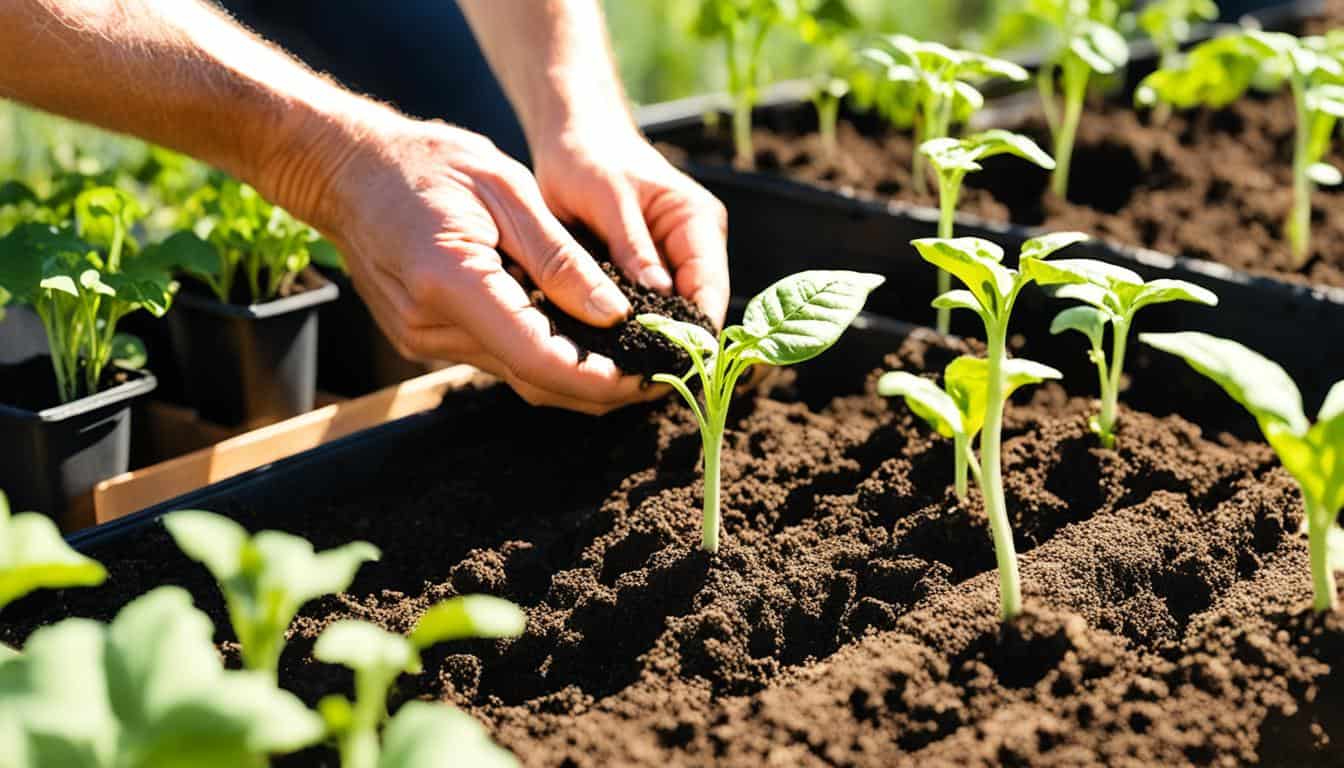
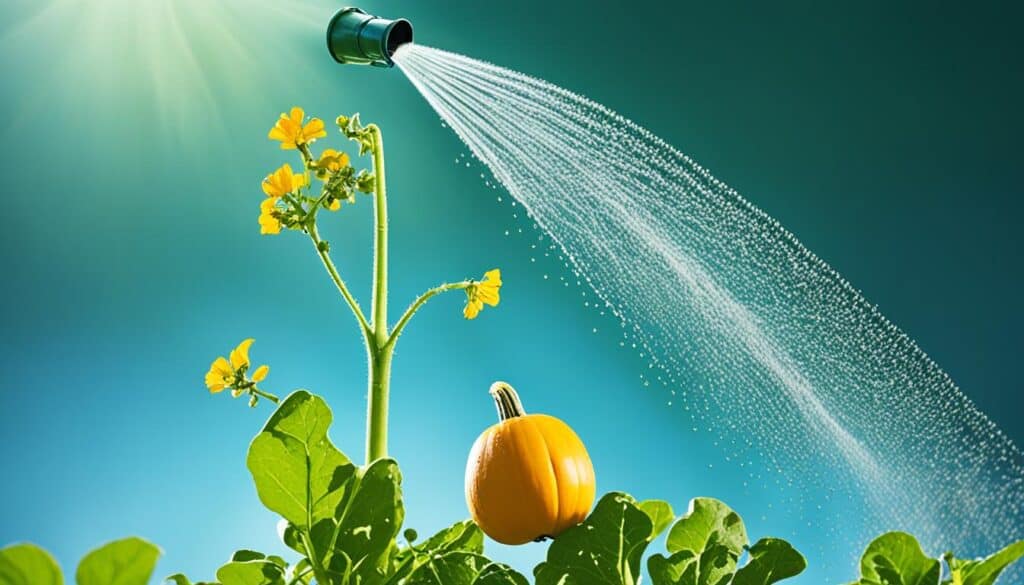
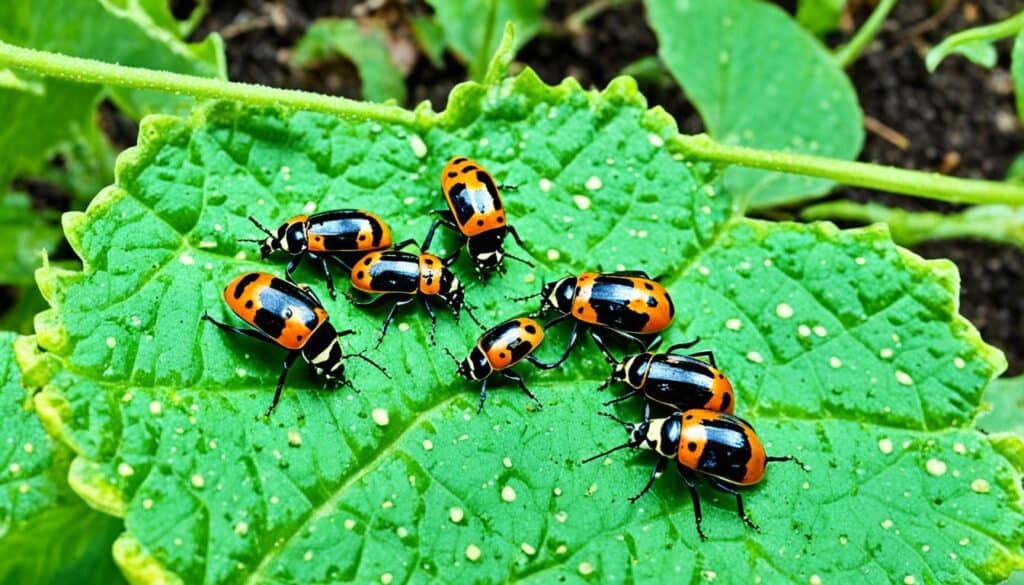
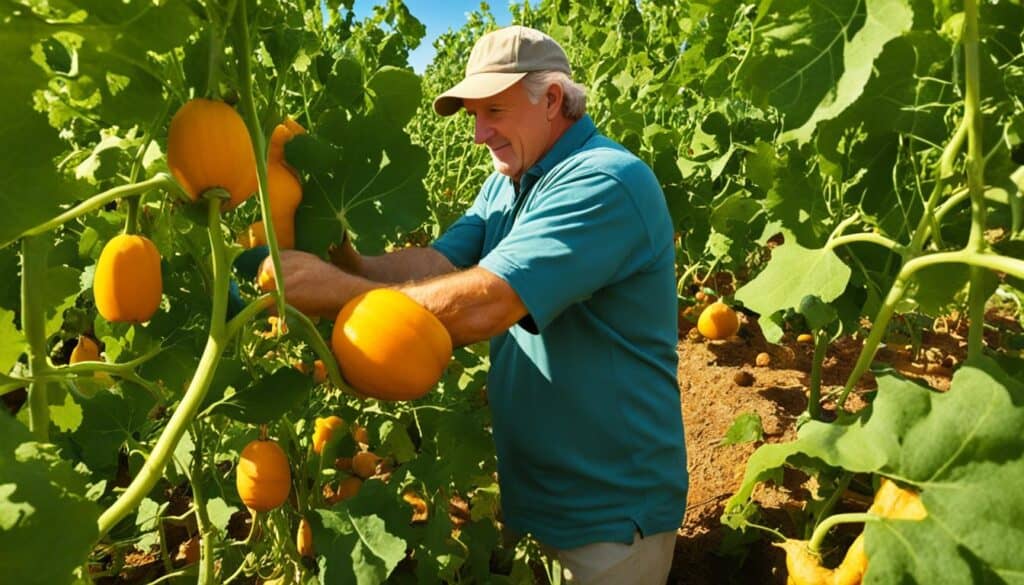
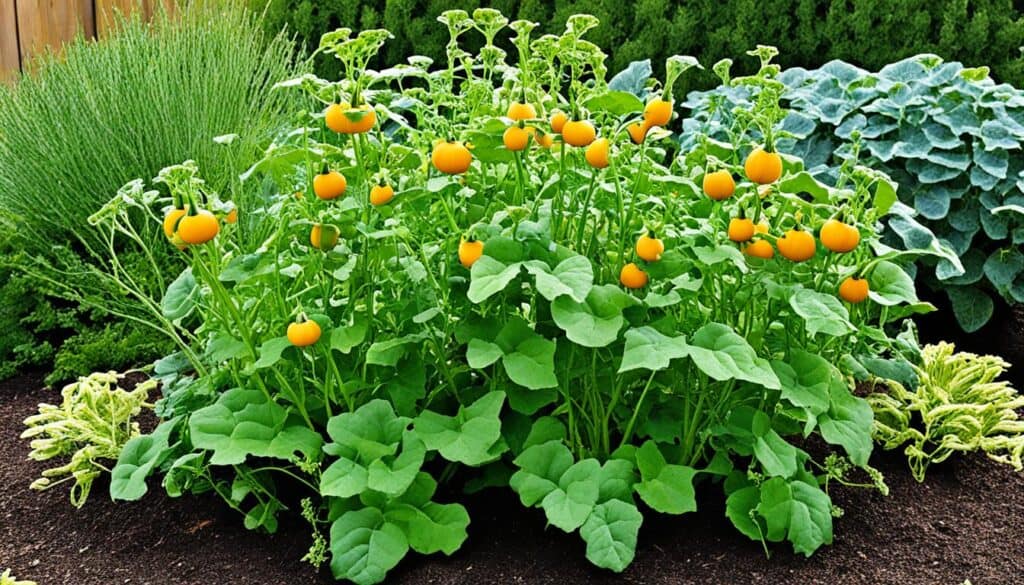




Leave a Reply